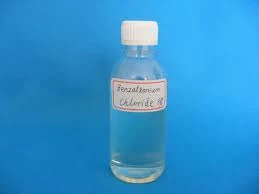pam flocculant
The Role of PAM Flocculant in Water Treatment
Polyacrylamide (PAM) flocculant is a polymer widely used in various industries, particularly in water treatment processes. Its effectiveness in enhancing the sedimentation of suspended solids and clarifying water has made it a crucial component in both environmental management and industrial operations. This article will explore the properties, applications, and benefits of PAM flocculants, along with their environmental impact.
Understanding PAM Flocculants
PAM is a synthetic polymer produced from acrylamide monomers, which can be modified to create different forms of flocculants. These modifications result in various charge properties—anionic, cationic, and non-ionic PAMs—allowing them to interact with different types of particles in water. Anionic PAM is typically used for settling negatively charged particles, while cationic PAM is more effective with positively charged particles. This versatility is one of the key reasons for PAM’s popularity in wastewater treatment.
Applications in Water Treatment
PAM flocculants are primarily used in several stages of water treatment, including clarification, thickening, and dewatering. In municipal wastewater treatment plants, PAM aids in the removal of suspended solids, colloids, and other impurities. When added to wastewater, it promotes the agglomeration of these particles, forming larger flocs that can be easily separated from the liquid phase. This process significantly enhances the quality of treated water, making it suitable for discharge or reuse.
In addition to municipal applications, PAM is widely employed in industrial sectors, such as mining, pulp and paper production, and oil recovery. In the mining industry, for example, PAM flocculants help in the separation of ore from waste materials, leading to more efficient extraction and minimizing environmental impact. Similarly, in the paper industry, PAM assists in the clarification of wood pulp, improving the overall quality of paper products.
pam flocculant

Benefits of Using PAM Flocculants
The use of PAM flocculants offers numerous advantages. Firstly, PAM increases the efficiency of sedimentation processes, resulting in faster clarification and reduced processing times. This efficiency can also lead to cost savings, as less energy is required for pumping and operating equipment.
Secondly, PAM flocculants significantly improve water quality by reducing turbidity and removing harmful pathogens, resulting in safer and cleaner water for consumption and industrial use. This is particularly important in regions with limited access to clean water sources.
Additionally, PAM flocculants are biodegradable when used in appropriate conditions, minimizing their environmental footprint. This characteristic is increasingly important in today’s environmentally-conscious landscape, where industries are under pressure to adopt sustainable practices.
Considerations and Environmental Impact
Despite their benefits, the use of PAM flocculants is not without concerns. The primary ingredient, acrylamide, is a neurotoxin and potential carcinogen. Therefore, it is essential to handle PAM products carefully and adhere to regulatory guidelines to minimize any risks associated with their use. Furthermore, overuse or improper disposal of PAM can lead to contamination of water sources, which necessitates proper management practices.
In conclusion, PAM flocculants play a pivotal role in enhancing water treatment processes across various industries. Their ability to improve sedimentation efficiency and water quality makes them an invaluable tool for environmental protection and industrial operations. By understanding the properties, applications, and potential risks associated with PAM flocculants, industries can leverage their benefits while mitigating environmental impacts. As water quality becomes increasingly critical in our changing world, the importance of effective flocculants like PAM cannot be overstated.
-
Water Treatment with Flocculant Water TreatmentNewsJun.12,2025
-
Polymaleic AnhydrideNewsJun.12,2025
-
Polyaspartic AcidNewsJun.12,2025
-
Enhance Industrial Processes with IsothiazolinonesNewsJun.12,2025
-
Enhance Industrial Processes with PBTCA SolutionsNewsJun.12,2025
-
Dodecyldimethylbenzylammonium Chloride SolutionsNewsJun.12,2025





